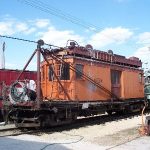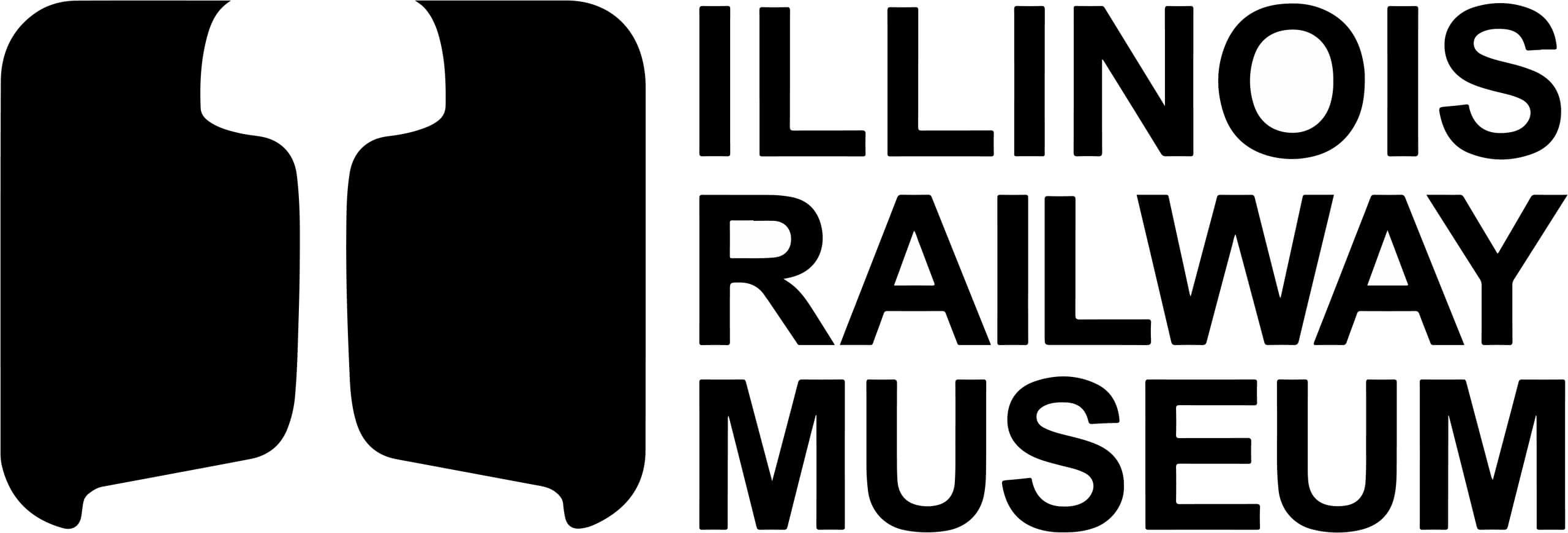Electric Work Equipment

Chicago North Shore & Milwaukee 604
| Description: | Double-truck line car |
Equipment Information
Chicago North Shore & Milwaukee 604 is an overhead line car the interurban line built in their shops. It has a rooftop platform for workers maintaining the overhead trolley wire as well as a derrick for setting line poles. It is the oldest surviving piece of equipment from the North Shore Line. IRM has used this car in its original role for over 50 years.
Chicago North Shore & Milwaukee 604 Details
Builder: Chicago & Milwaukee Electric
Year Built: 1914
Length: 40ft 2in
Width: 8ft 10in
Height: 13ft 8in
Weight: 65000 lbs
Brakes: AMM
Motors: 4 GE 73C
Control: HL-189D
Compressor: 2 CP-28
Trucks: McGuire 20A
Description: Double End / Double Truck / Line Car
Arrived: 1963
Condition: Complete / restored / not operational
North Shore 604 Ownership History
1914-1917 – Chicago & Milwaukee Electric
1917-1963 – Chicago North Shore & Milwaukee
1963-present – Illinois Railway Museum, Union, IL
Overhead Line Cars
North Shore Line car 604 is a “line car,” a piece of railway equipment designed specifically for working on the overhead lines, or overhead wires, that most electric railways used to power their trains.
Line cars were unique to electric railways but were ubiquitous, as the extensive network of overhead wires required regular maintenance and repair in order to keep it in good condition. Even the earliest electric railways in the 1880s used overhead wires to power streetcars; the very word “trolley” derives from a troller, a small cart that balanced atop paired wires in one early design for an electric railway system. During the height of the electric railway era in the early 1900s, the vast majority of electric railways used overhead wires to power their trains.
Most lines used simple suspension wires, with the copper contact wire hung directly from support brackets or span wires. Heavier electric lines often used “catenary,” where the contact wire was suspended from a second support wire that formed a catenary curve. These extensive airborne networks of wires, while fairly hardy, did require adjustment and repair.
Electric railways employed linemen, men who would operate the line car to a trouble spot and then stand on the platform atop the line car and work on the wires. Linemen typically did this work with the power on, and 600 volts going through the overhead wires. Line car platforms were made of wood to insulate the linemen and prevent them from being electrocuted. Inside the line car was a small workshop and storage space for parts. Some line cars, like car 604, also had cranes and exterior brackets for carrying large spools of copper wire.
The North Shore Line’s workshops in Highwood, Illinois, built car 604. A century later it still sees use repairing the museum’s overhead wire. Museum volunteers installed, and still maintain, all of this overhead wire.
Click to return to Electric Work Equipment roster
Click to return to main roster page
